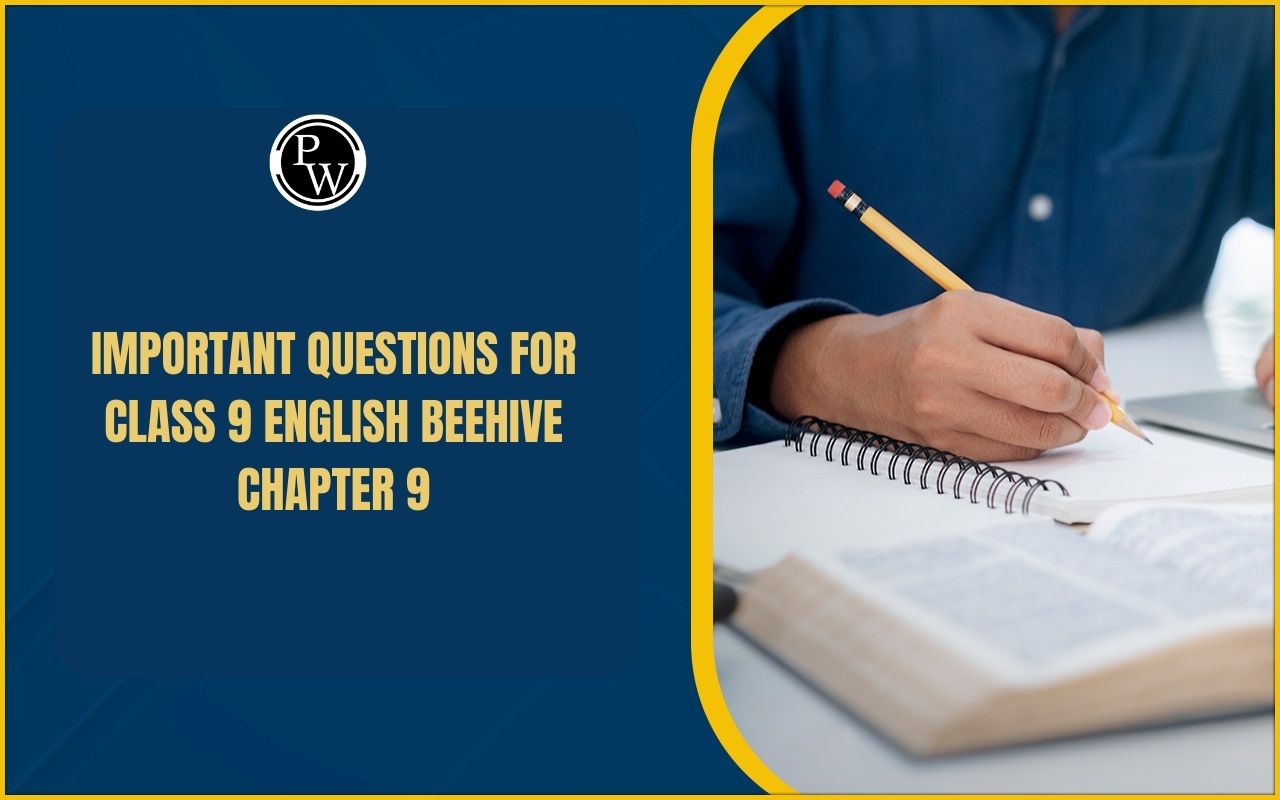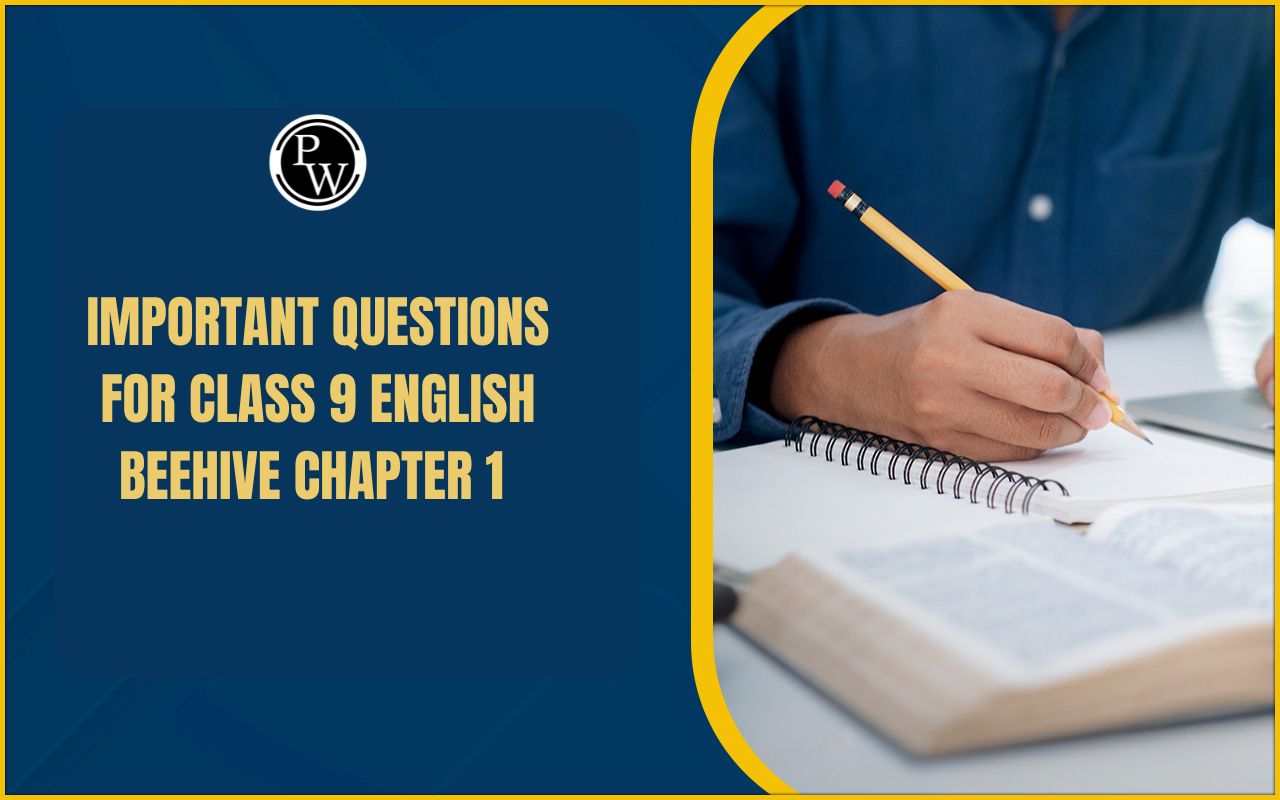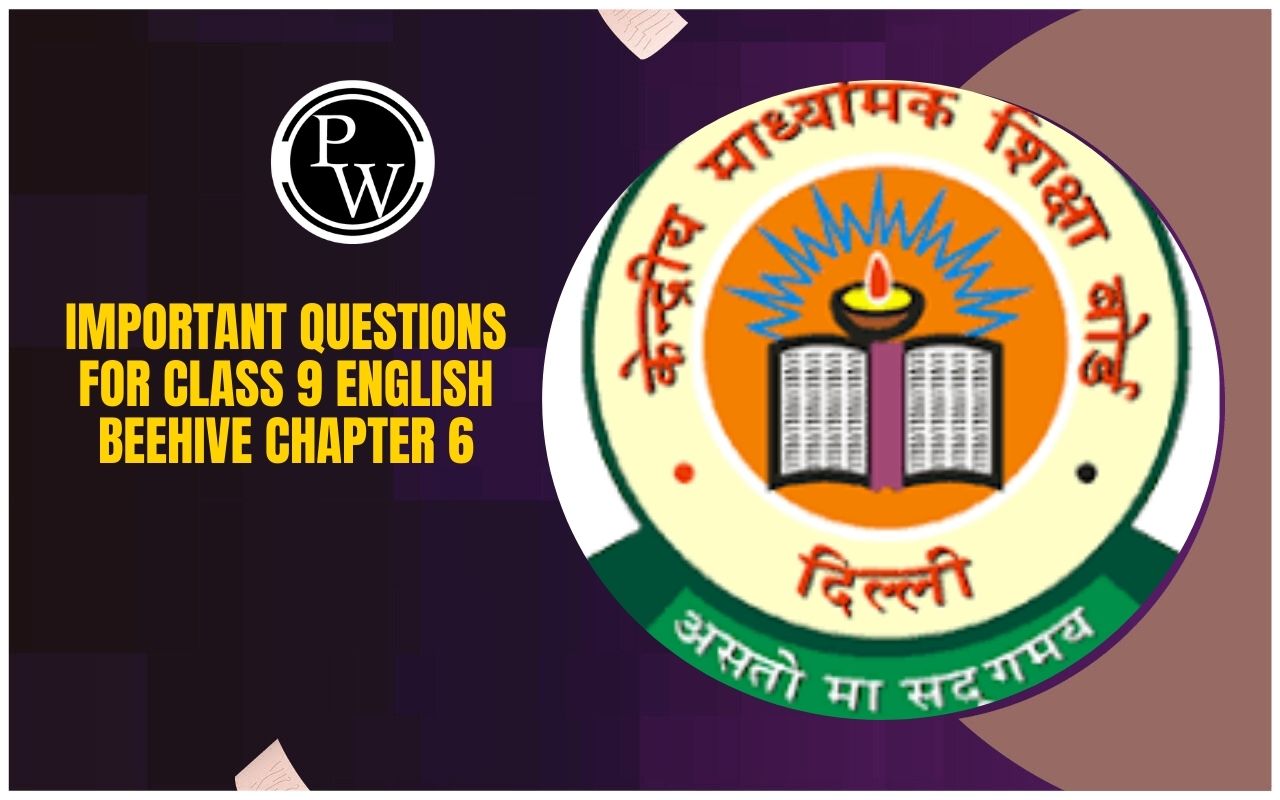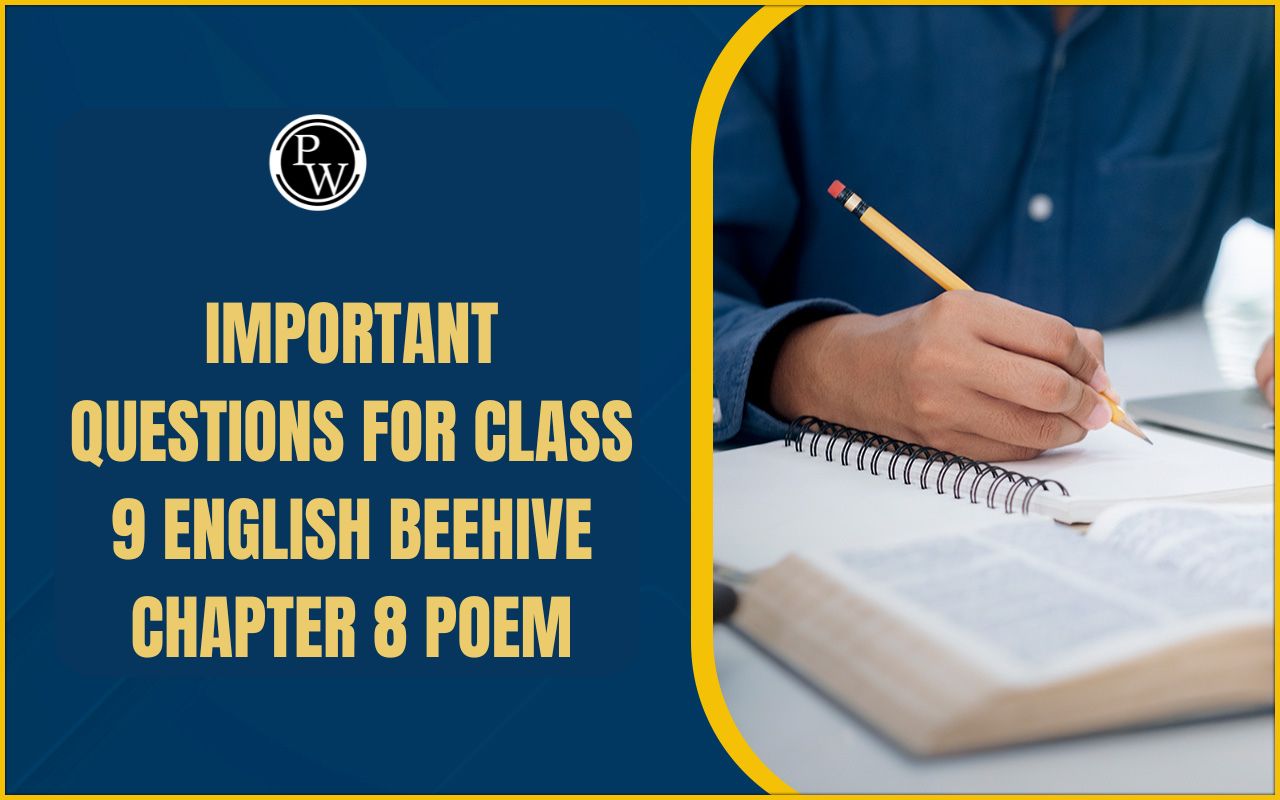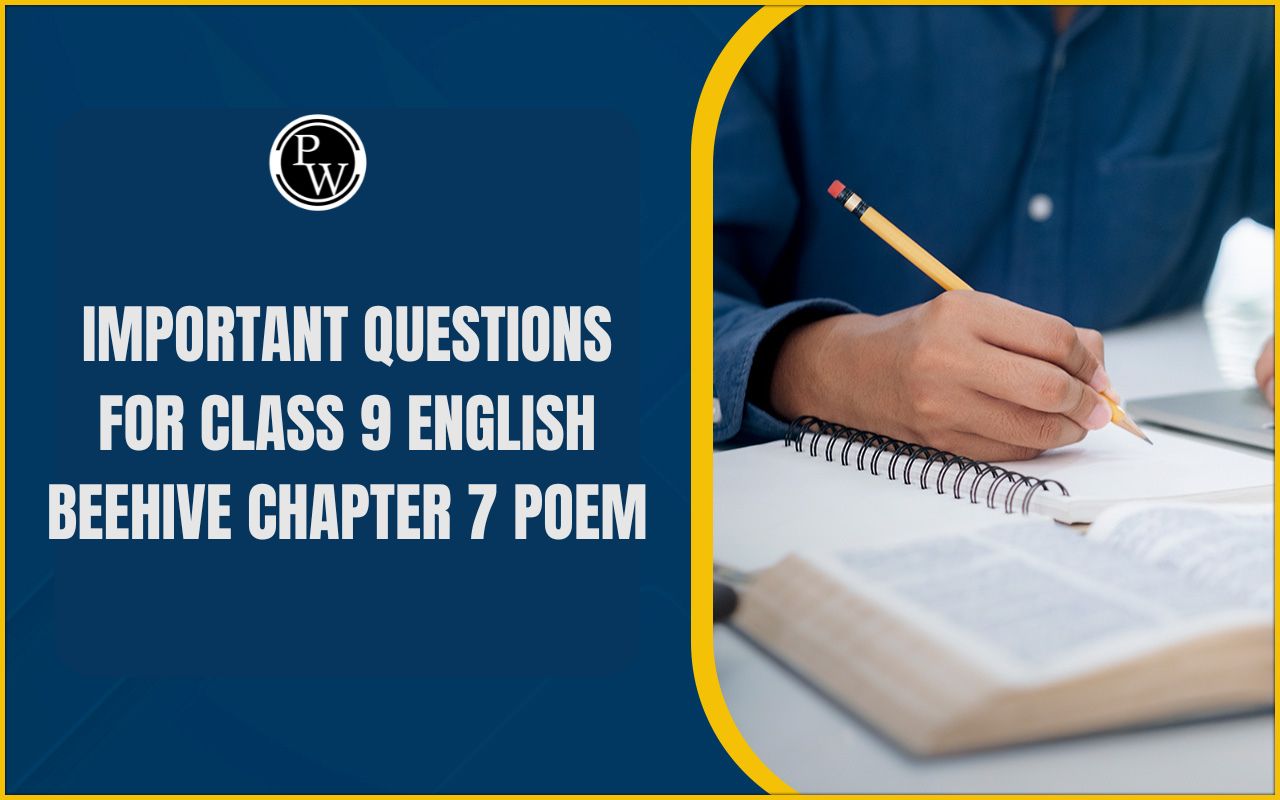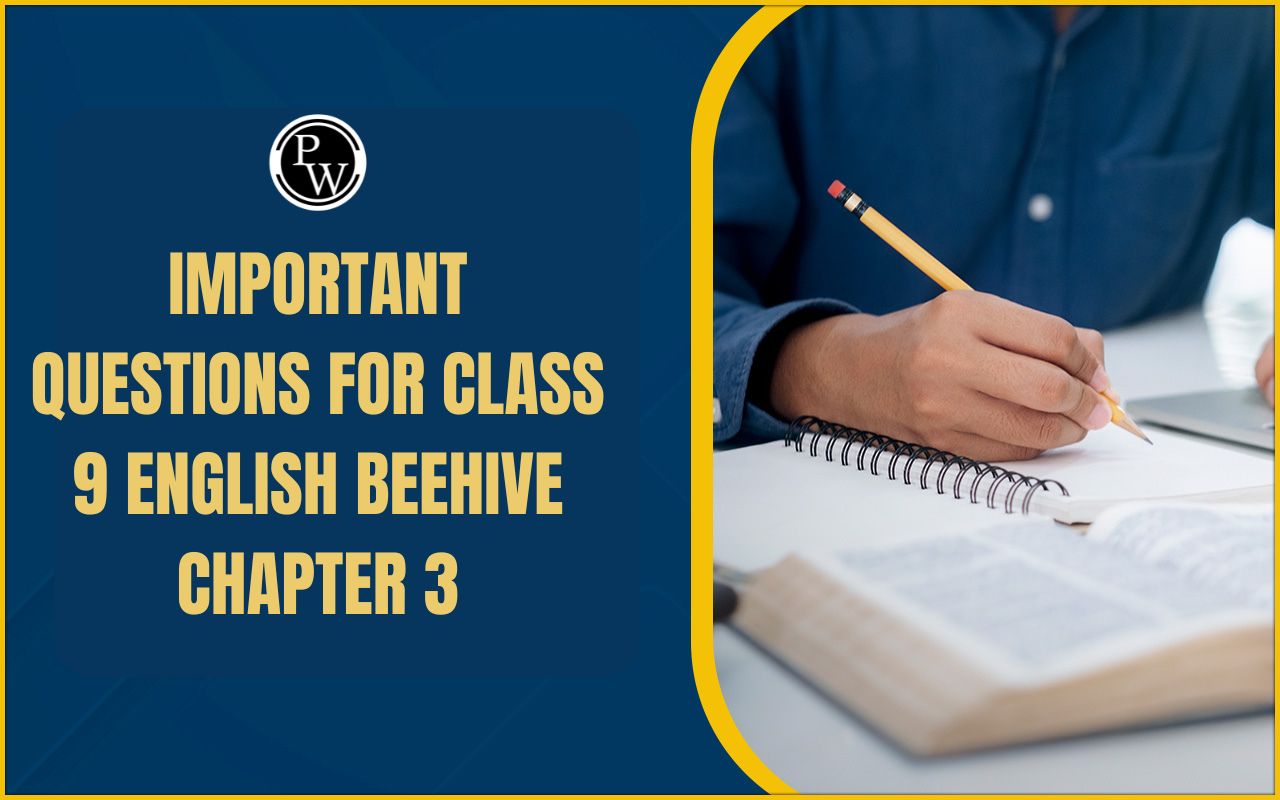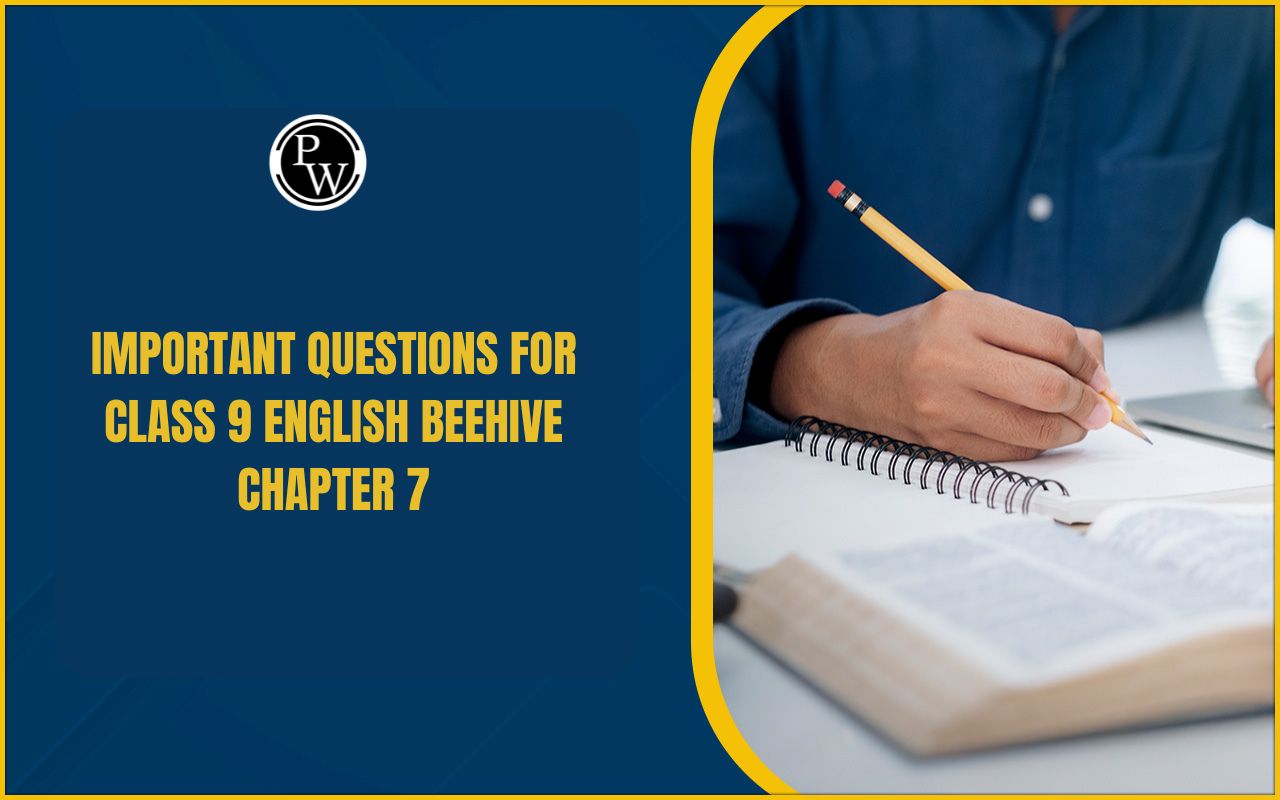
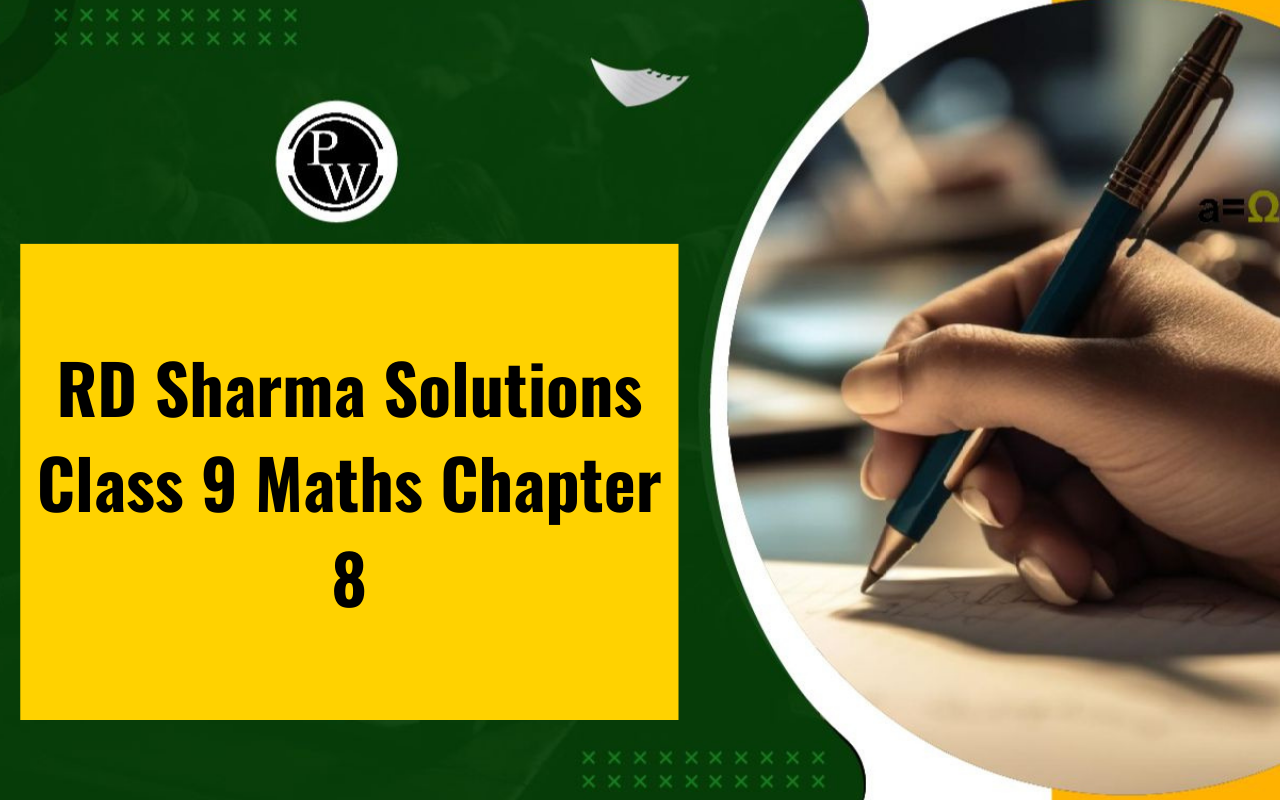
RD Sharma Solutions Class 9 Maths Chapter 8: In RD Sharma Solutions for Class 9 Maths Chapter 8, Lines and Angles, students are provided with a comprehensive guide to understanding the fundamental concepts of geometry. This chapter examine the properties of lines and angles, covering topics such as parallel lines, transversals, angles formed by intersecting lines, and angle sum property of triangles.
With the help of clear explanations and step-by-step solutions, students can easily grasp these concepts and strengthen their problem-solving skills. RD Sharma Solutions for Chapter 8 are created to facilitate a deeper understanding of geometry principles, making it easier for students to excel in their mathematics studies. Whether preparing for exams or seeking to enhance their mathematical knowledge, students can rely on these solutions to navigate through the complexities of lines and angles with confidence.CBSE Class 9 Science Syllabus 2024-25
RD Sharma Solutions Class 9 Maths Chapter 8 PDF
Here we have provided RD Sharma Class 9 Solutions Maths Chapter 8 solutions for the students to help them ace their examinations. Students can refer to these solutions and practice these questions to score better in the exams.RD Sharma Solutions Class 9 Maths Chapter 8 PDF
RD Sharma Solutions Class 9 Maths Chapter 8 Lines and Angles
Below, you'll find solutions to RD Sharma Class 9 Maths Chapter 8, focusing on Lines and Angles. With the help of these solutions, you can improve your problem-solving skills and prepare effectively for exams.CBSE Class 10 Result 2024 Expected To Be Out Soon
RD Sharma Solutions Class 9 Maths Chapter 8 Lines and Angles Exercise 8.1
Question 1: Write the complement of each of the following angles:
(i)20 0
(ii)35 0
(iii)90 0
(iv) 77 0
(v)30 0
Solution :
(i) The sum of an angle and its complement = 90 0
Therefore, the complement of 20 0 = 90 0 – 20 0 = 70 0(ii) The sum of an angle and its complement = 90 0
Therefore, the complement of 35° = 90° – 35° = 55(iii) The sum of an angle and its complement = 90 0
Therefore, the complement of 90 0 = 90 0 – 90 0 = 0 0(iv) The sum of an angle and its complement = 90 0
Therefore, the complement of 77 0 = 90° – 77 0 = 13 0(v) The sum of an angle and its complement = 90 0
Therefore, the complement of 30 0 = 90 0 – 30 0 = 60 0Question 2 : Write the supplement of each of the following angles:
(i) 54 0
(ii) 132 0
(iii) 138 0
Solution:
(i) The sum of an angle and its supplement = 180 0 .
Therefore supplement of angle 54 0 = 180 0 – 54 0 = 126 0(ii) The sum of an angle and its supplement = 180 0 .
Therefore supplement of angle 132 0 = 180 0 – 132 0 = 48 0(iii) The sum of an angle and its supplement = 180 0 .
Therefore supplement of angle 138 0 = 180 0 – 138 0 = 42 0Question 3: If an angle is 28 0 less than its complement, find its measure?
Solution:
Let the measure of any angle is ‘ a ‘ degrees Thus, its complement will be (90 – a) 0 So, the required angle = Complement of a – 28 a = ( 90 – a ) – 28 2a = 62 a = 31 Hence, the angle measured is 31 0 .Question 4 : If an angle is 30° more than one half of its complement, find the measure of the angle?
Solution :
Let an angle measured by ‘ a ‘ in degrees Thus, its complement will be (90 – a) 0 Required Angle = 30 0 + complement/2 a = 30 0 + ( 90 – a ) 0 / 2 a + a/2 = 30 0 + 45 0 3a/2 = 75 0 a = 50 0 Therefore, the measure of required angle is 50 0 .Question 5 : Two supplementary angles are in the ratio 4:5. Find the angles?
Solution :
Two supplementary angles are in the ratio 4:5. Let us say, the angles are 4a and 5a (in degrees) Since angle are supplementary angles; Which implies, 4a + 5a = 180 0 9a = 180 0 a = 20 0 Therefore, 4a = 4 (20) = 80 0 and 5(a) = 5 (20) = 100 0 Hence, required angles are 80° and 100 0 .Question 6 : Two supplementary angles differ by 48 0 . Find the angles?
Solution : Given: Two supplementary angles differ by 48 0 .
Consider a 0 be one angle then its supplementary angle will be equal to (180 – a) 0 According to the question; (180 – a ) – x = 48 (180 – 48 ) = 2a 132 = 2a 132/2 = a Or a = 66 0 Therefore, 180 – a = 114 0 Hence, the two angles are 66 0 and 114 0 .Question 7: An angle is equal to 8 times its complement. Determine its measure?
Solution: Given: Required angle = 8 times of its complement
Consider a 0 be one angle then its complementary angle will be equal to (90 – a) 0 According to the question; a = 8 times of its complement a = 8 ( 90 – a ) a = 720 – 8a a + 8a = 720 9a = 720 a = 80 Therefore, the required angle is 80 0 .RD Sharma Solutions Class 9 Maths Chapter 8 Lines and Angles Exercise 8.2
Question 1: In the below Fig. OA and OB are opposite rays:
(i) If x = 25 0 , what is the value of y?
(ii) If y = 35 0 , what is the value of x?

Solution:
(i) Given: x = 25
From figure: ∠AOC and ∠BOC form a linear pair Which implies, ∠AOC + ∠BOC = 180 0 From the figure, ∠AOC = 2y + 5 and ∠BOC = 3x ∠AOC + ∠BOC = 180 0 (2y + 5) + 3x = 180 (2y + 5) + 3 (25) = 180 2y + 5 + 75 = 180 2y + 80 = 180 2y = 100 y = 100/2 = 50 Therefore, y = 50 0(ii) Given: y = 35 0
From figure: ∠AOC + ∠BOC = 180° (Linear pair angles) (2y + 5) + 3x = 180 (2(35) + 5) + 3x = 180 75 + 3x = 180 3x = 105 x = 35 Therefore, x = 35 0Question 2: In the below figure, write all pairs of adjacent angles and all the linear pairs.

Solution : From figure, pairs of adjacent angles are :
(∠AOC, ∠COB) ; (∠AOD, ∠BOD) ; (∠AOD, ∠COD) ; (∠BOC, ∠COD) And Linear pair of angles are (∠AOD, ∠BOD) and (∠AOC, ∠BOC). [As ∠AOD + ∠BOD = 180 0 and ∠AOC+ ∠BOC = 180 0 .]Question 3 : In the given figure, find x. Further find ∠BOC , ∠COD and ∠AOD.

Solution:
From figure, ∠AOD and ∠BOD form a linear pair, Therefore, ∠AOD+ ∠BOD = 180 0 Also, ∠AOD + ∠BOC + ∠COD = 180 0 Given: ∠AOD = (x+10) 0 , ∠COD = x 0 and ∠BOC = (x + 20) 0 ( x + 10 ) + x + ( x + 20 ) = 180 3x + 30 = 180 3x = 180 – 30 x = 150/3 x = 50 0 Now, ∠AOD=(x+10) =50 + 10 = 60 ∠COD = x = 50 ∠BOC = (x+20) = 50 + 20 = 70 Hence, ∠AOD=60 0 , ∠COD=50 0 and ∠BOC=70 0Question 4: In figure, rays OA, OB, OC, OD and OE have the common end point 0. Show that ∠AOB+∠BOC+∠COD+∠DOE+∠EOA=360°.

Solution:
Given: Rays OA, OB, OC, OD and OE have the common endpoint O. Draw an opposite ray OX to ray OA, which make a straight line AX. From figure:
∠AOB and ∠BOX are linear pair angles, therefore,
∠AOB +∠BOX = 180
0
Or, ∠AOB + ∠BOC + ∠COX = 180
0
—–—–(1)
Also,
∠AOE and ∠EOX are linear pair angles, therefore,
∠AOE+∠EOX =180°
Or, ∠AOE + ∠DOE + ∠DOX = 180
0
—–(2)
By adding equations, (1) and (2), we get;
∠AOB + ∠BOC + ∠COF + ∠AOE + ∠DOE + ∠DOX = 180
0
+ 180
0
∠AOB + ∠BOC + ∠COD + ∠DOE + ∠EOA = 360
0
Hence Proved.
From figure:
∠AOB and ∠BOX are linear pair angles, therefore,
∠AOB +∠BOX = 180
0
Or, ∠AOB + ∠BOC + ∠COX = 180
0
—–—–(1)
Also,
∠AOE and ∠EOX are linear pair angles, therefore,
∠AOE+∠EOX =180°
Or, ∠AOE + ∠DOE + ∠DOX = 180
0
—–(2)
By adding equations, (1) and (2), we get;
∠AOB + ∠BOC + ∠COF + ∠AOE + ∠DOE + ∠DOX = 180
0
+ 180
0
∠AOB + ∠BOC + ∠COD + ∠DOE + ∠EOA = 360
0
Hence Proved.
Question 5 : In figure, ∠AOC and ∠BOC form a linear pair. If a – 2b = 30°, find a and b?

Solution:
Given : ∠AOC and ∠BOC form a linear pair. => a + b = 180 0 …..(1) a – 2b = 30 0 …(2) (given) On subtracting equation (2) from (1), we get a + b – a + 2b = 180 – 30 3b = 150 b = 150/3 b = 50 0 Since, a – 2b = 30 0 a – 2(50) = 30 a = 30 + 100 a = 130 0 Therefore, the values of a and b are 130° and 50° respectively.Question 6: How many pairs of adjacent angles are formed when two lines intersect at a point?
Solution : Four pairs of adjacent angles are formed when two lines intersect each other at a single point.
For example, Let two lines AB and CD intersect at point O. The 4 pair of adjacent angles are :
(∠AOD,∠DOB),(∠DOB,∠BOC),(∠COA, ∠AOD) and (∠BOC,∠COA).
The 4 pair of adjacent angles are :
(∠AOD,∠DOB),(∠DOB,∠BOC),(∠COA, ∠AOD) and (∠BOC,∠COA).
Question 7: How many pairs of adjacent angles, in all, can you name in figure given?

Solution : Number of Pairs of adjacent angles, from the figure, are :
∠EOC and ∠DOC ∠EOD and ∠DOB ∠DOC and ∠COB ∠EOD and ∠DOA ∠DOC and ∠COA ∠BOC and ∠BOA ∠BOA and ∠BOD ∠BOA and ∠BOE ∠EOC and ∠COA ∠EOC and ∠COB Hence, there are 10 pairs of adjacent angles.Question 8: In figure, determine the value of x.

Solution :
The sum of all the angles around a point O is equal to 360°. Therefore, 3x + 3x + 150 + x = 360 0 7x = 360 0 – 150 0 7x = 210 0 x = 210/7 x = 30 0 Hence, the value of x is 30°.Question 9: In figure, AOC is a line, find x.

Solution:
From the figure, ∠AOB and ∠BOC are linear pairs, ∠AOB +∠BOC =180° 70 + 2x = 180 2x = 180 – 70 2x = 110 x = 110/2 x = 55 Therefore, the value of x is 55 0 .Question 10: In figure, POS is a line, find x.

Solution:
From figure, ∠POQ and ∠QOS are linear pairs. Therefore, ∠POQ + ∠QOS=180 0 ∠POQ + ∠QOR+∠SOR=180 0 60 0 + 4x +40 0 = 180 0 4x = 180 0 -100 0 4x = 80 0 x = 20 0 Hence, the value of x is 20 0 .RD Sharma Solutions Class 9 Maths Chapter 8 Lines and Angles Exercise 8.3
Question 1: In figure, lines l 1 , and l 2 intersect at O, forming angles as shown in the figure. If x = 45. Find the values of y, z and u.

Solution :
Given: x = 45 0 Since vertically opposite angles are equal, therefore z = x = 45 0 z and u are angles that are a linear pair, therefore, z + u = 180 0 Solve, z + u = 180 0 , for u u = 180 0 – z u = 180 0 – 45 u = 135 0 Again, x and y angles are a linear pair. x+ y = 180 0 y = 180 0 – x y =180 0 – 45 0 y = 135 0 Hence, remaining angles are y = 135 0 , u = 135 0 and z = 45 0 .Question 2 : In figure, three coplanar lines intersect at a point O, forming angles as shown in the figure. Find the values of x, y, z and u .

Solution :
(∠BOD, z); (∠DOF, y ) are pair of vertically opposite angles. So, ∠BOD = z = 90 0 ∠DOF = y = 50 0 [Vertically opposite angles are equal.] Now, x + y + z = 180 [Linear pair] [AB is a straight line] x + y + z = 180 x + 50 + 90 = 180 x = 180 – 140 x = 40 Hence values of x, y, z and u are 40 0 , 50 0 , 90 0 and 40 0 respectively.Question 3 : In figure, find the values of x, y and z.

Solution:
From figure, y = 25 0 [Vertically opposite angles are equal] Now ∠x + ∠y = 180 0 [Linear pair of angles] x = 180 – 25 x = 155 Also, z = x = 155 [Vertically opposite angles] Answer: y = 25 0 and z = 155 0Question 4 : In figure, find the value of x.

Solution:
∠AOE = ∠BOF = 5x [Vertically opposite angles] ∠COA+∠AOE+∠EOD = 180 0 [Linear pair] 3x + 5x + 2x = 180 10x = 180 x = 180/10 x = 18 The value of x = 18 0Question 5 : Prove that bisectors of a pair of vertically opposite angles are in the same straight line.
Solution:
 Lines AB and CD intersect at point O, such that
∠AOC = ∠BOD (vertically angles) …(1)
Also OP is the bisector of AOC and OQ is the bisector of BOD
To Prove: POQ is a straight line.
OP is the bisector of ∠AOC:
∠AOP = ∠COP …(2)
OQ is the bisector of ∠BOD:
∠BOQ = ∠QOD …(3)
Now,
Sum of the angles around a point is 360
o
.
∠AOC + ∠BOD + ∠AOP + ∠COP + ∠BOQ + ∠QOD = 360
0
∠BOQ + ∠QOD + ∠DOA + ∠AOP + ∠POC + ∠COB = 360
0
2∠QOD + 2∠DOA + 2∠AOP = 360
0
(Using (1), (2) and (3))
∠QOD + ∠DOA + ∠AOP = 180
0
POQ = 180
0
Which shows that, the bisectors of pair of vertically opposite angles are on the same straight line.
Hence Proved.
Lines AB and CD intersect at point O, such that
∠AOC = ∠BOD (vertically angles) …(1)
Also OP is the bisector of AOC and OQ is the bisector of BOD
To Prove: POQ is a straight line.
OP is the bisector of ∠AOC:
∠AOP = ∠COP …(2)
OQ is the bisector of ∠BOD:
∠BOQ = ∠QOD …(3)
Now,
Sum of the angles around a point is 360
o
.
∠AOC + ∠BOD + ∠AOP + ∠COP + ∠BOQ + ∠QOD = 360
0
∠BOQ + ∠QOD + ∠DOA + ∠AOP + ∠POC + ∠COB = 360
0
2∠QOD + 2∠DOA + 2∠AOP = 360
0
(Using (1), (2) and (3))
∠QOD + ∠DOA + ∠AOP = 180
0
POQ = 180
0
Which shows that, the bisectors of pair of vertically opposite angles are on the same straight line.
Hence Proved.
Question 6 : If two straight lines intersect each other, prove that the ray opposite to the bisector of one of the angles thus formed bisects the vertically opposite angle.
Solution: Given AB and CD are straight lines which intersect at O.
OP is the bisector of ∠ AOC. To Prove : OQ is the bisector of ∠BOD Proof : AB, CD and PQ are straight lines which intersect in O.
Vertically opposite angles: ∠ AOP = ∠ BOQ
Vertically opposite angles: ∠ COP = ∠ DOQ
OP is the bisector of ∠ AOC : ∠ AOP = ∠ COP
Therefore, ∠BOQ = ∠ DOQ
Hence, OQ is the bisector of ∠BOD.
AB, CD and PQ are straight lines which intersect in O.
Vertically opposite angles: ∠ AOP = ∠ BOQ
Vertically opposite angles: ∠ COP = ∠ DOQ
OP is the bisector of ∠ AOC : ∠ AOP = ∠ COP
Therefore, ∠BOQ = ∠ DOQ
Hence, OQ is the bisector of ∠BOD.
RD Sharma Solutions Class 9 Maths Chapter 8 Lines and Angles Exercise 8.4
Question 1: In figure, AB, CD and ∠1 and ∠2 are in the ratio 3 : 2. Determine all angles from 1 to 8.

Solution:
Let ∠1 = 3x and ∠2 = 2x From figure: ∠1 and ∠2 are linear pair of angles Therefore, ∠1 + ∠2 = 180 3x + 2x = 180 5x = 180 x = 180 / 5 => x = 36 So, ∠1 = 3x = 108 0 and ∠2 = 2x = 72 0 As we know, vertically opposite angles are equal. Pairs of vertically opposite angles are: (∠1 = ∠3); (∠2 = ∠4) ; (∠5, ∠7) and (∠6 , ∠8) ∠1 = ∠3 = 108° ∠2 = ∠4 = 72° ∠5 = ∠7 ∠6 = ∠8 We also know, if a transversal intersects any parallel lines, then the corresponding angles are equal ∠1 = ∠5 = ∠7 = 108° ∠2 = ∠6 = ∠8 = 72° Answer: ∠1 = 108°, ∠2 = 72°, ∠3 = 108°, ∠4 = 72°, ∠5 = 108°, ∠6 = 72°, ∠7 = 108° and ∠8 = 72°Question 2: In figure, I, m and n are parallel lines intersected by transversal p at X, Y and Z respectively. Find ∠1, ∠2 and ∠3.

Solution: From figure:
∠Y = 120° [Vertical opposite angles] ∠3 + ∠Y = 180° [Linear pair angles theorem] => ∠3= 180 – 120 => ∠3= 60° Line l is parallel to line m, ∠1 = ∠3 [ Corresponding angles] ∠1 = 60° Also, line m is parallel to line n, ∠2 = ∠Y [Alternate interior angles are equal] ∠2 = 120° Answer: ∠1 = 60°, ∠2 = 120° and ∠3 = 60°.Question 3: In figure, AB || CD || EF and GH || KL. Find ∠HKL.

Solution:
Extend LK to meet line GF at point P. From figure, CD || GF, so, alternate angles are equal.
∠CHG =∠HGP = 60°
∠HGP =∠KPF = 60° [Corresponding angles of parallel lines are equal]
Hence, ∠KPG =180 – 60 = 120°
=> ∠GPK = ∠AKL= 120° [Corresponding angles of parallel lines are equal]
∠AKH = ∠KHD = 25° [alternate angles of parallel lines]
Therefore, ∠HKL = ∠AKH + ∠AKL = 25 + 120 = 145°
From figure, CD || GF, so, alternate angles are equal.
∠CHG =∠HGP = 60°
∠HGP =∠KPF = 60° [Corresponding angles of parallel lines are equal]
Hence, ∠KPG =180 – 60 = 120°
=> ∠GPK = ∠AKL= 120° [Corresponding angles of parallel lines are equal]
∠AKH = ∠KHD = 25° [alternate angles of parallel lines]
Therefore, ∠HKL = ∠AKH + ∠AKL = 25 + 120 = 145°
Question 4: In figure, show that AB || EF.

Solution: Produce EF to intersect AC at point N.
 From figure, ∠BAC = 57° and
∠ACD = 22°+35° = 57°
Alternative angles of parallel lines are equal
=> BA || EF …..(1)
Sum of Co-interior angles of parallel lines is 180°
EF || CD
∠DCE + ∠CEF = 35 + 145 = 180° …(2)
From (1) and (2)
AB || EF
[Since, Lines parallel to the same line are parallel to each other]
Hence Proved.
From figure, ∠BAC = 57° and
∠ACD = 22°+35° = 57°
Alternative angles of parallel lines are equal
=> BA || EF …..(1)
Sum of Co-interior angles of parallel lines is 180°
EF || CD
∠DCE + ∠CEF = 35 + 145 = 180° …(2)
From (1) and (2)
AB || EF
[Since, Lines parallel to the same line are parallel to each other]
Hence Proved.
| CBSE Class 9 Maths Syllabus | CBSE Class 9 Science Syllabus |
| CBSE Class 9 Computer Application Syllabus | CBSE Class 9 Social Science Syllabus |
RD Sharma Class 9 Solutions Maths Chapter 8 FAQs
What topics are covered in RD Sharma Class 9 Maths Chapter 8?
How can RD Sharma Solutions for Chapter 8 help me understand Lines and Angles better?
Can I use RD Sharma Solutions as a sole study resource for Chapter 8?
Do RD Sharma Solutions for Chapter 8 include explanations for theorems and proofs related to lines and angles?

